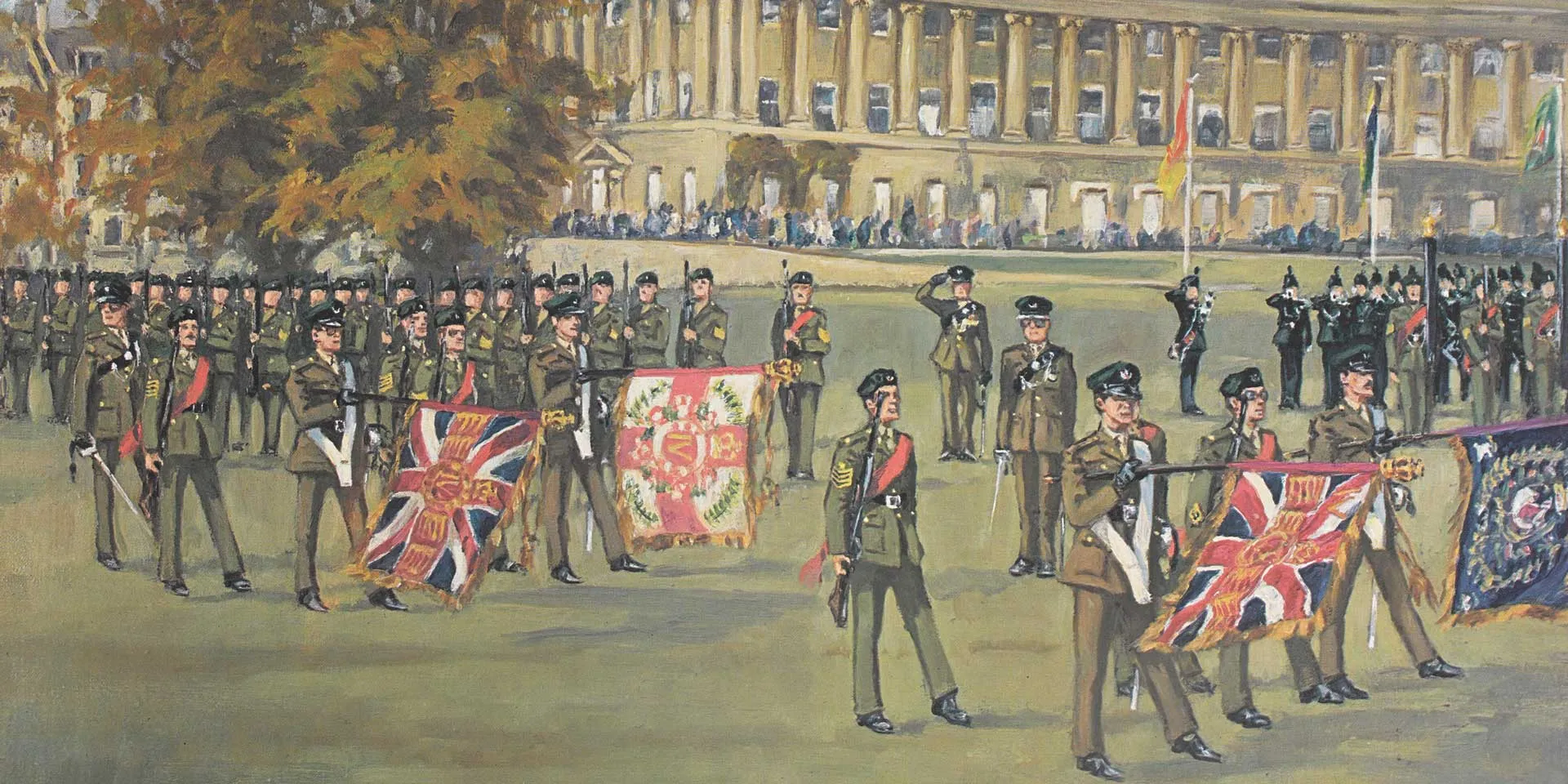
Presentation of Colours to 6th Battalion The Light Infantry by HM Queen Elizabeth the Queen Mother at Bath, 26 October 1979
Origins
This regiment was formed in 1968 by amalgamating the four regiments of the Light Infantry Brigade: The Somerset and Cornwall Light Infantry, The King’s Own Yorkshire Light Infantry, The King’s Shropshire Light Infantry and The Durham Light Infantry. These became the new unit’s 1st, 2nd, 3rd and 4th Battalions respectively.
These regular battalions served with armoured brigades while deployed with the British Army of the Rhine in West Germany, but with infantry brigades while in Britain. The regiment also played an important part in the development of airmobile tactics and procedures in the 1980s, with 2nd Battalion taking a leading role.
The territorial battalions of the four antecedent regiments were initially organised into a single unit known as the Light Infantry Volunteers. This unit was split in 1972 to give the Light Infantry four territorial battalions (5th, 6th, 7th and 8th).
Deployments
Within a year of the regiment's formation, 4th Battalion had been disbanded. The three remaining regular battalions spent the next 25 years alternating between tours of Northern Ireland, service in West Germany and postings in England.
The regiment’s battalions also deployed to Kenya (1969 and 1983), Malaysia (1969-70), Hong Kong (1976), Cyprus (1979-80), Gibraltar (1979), the Falklands (1985) and Belize (1992) on training and garrison duties.
In 1993, 1st Battalion was disbanded, with 2nd Battalion renumbered as 1st and 3rd Battalion as 2nd. These two battalions spent time in Bosnia in 1995-96. The next five years saw them take their final tours in Northern Ireland (1997 for 2nd Battalion and 2000 for 1st Battalion).
In 2001, 1st Battalion was deployed on peacekeeping duties to Kosovo and 1st Battalion to Sierra Leone.
1st Battalion also sent two companies to Iraq in March 2003. These were attached to the 2nd Royal Tank Regiment and remained there until October that year. 2nd Battalion initially only sent one company to Iraq, rising to four later in 2003.

Recruiting poster for The Light Infantry, 1995
Legacy
In 2007, The Light Infantry merged with The Devonshire and Dorset Light Infantry, The Gloucestershire, Berkshire and Wiltshire Light Infantry and The Royal Green Jackets to form The Rifles. Its 1st and 2nd Battalions became the new regiment’s 5th and 3rd Battalions respectively.
Regimental museums
The National Army Museum works with a network of Regimental and Corps Museums across the UK to help preserve and share the history and traditions of the Army and its soldiers.
Discover more about The Light Infantry by visiting Bodmin Keep.








